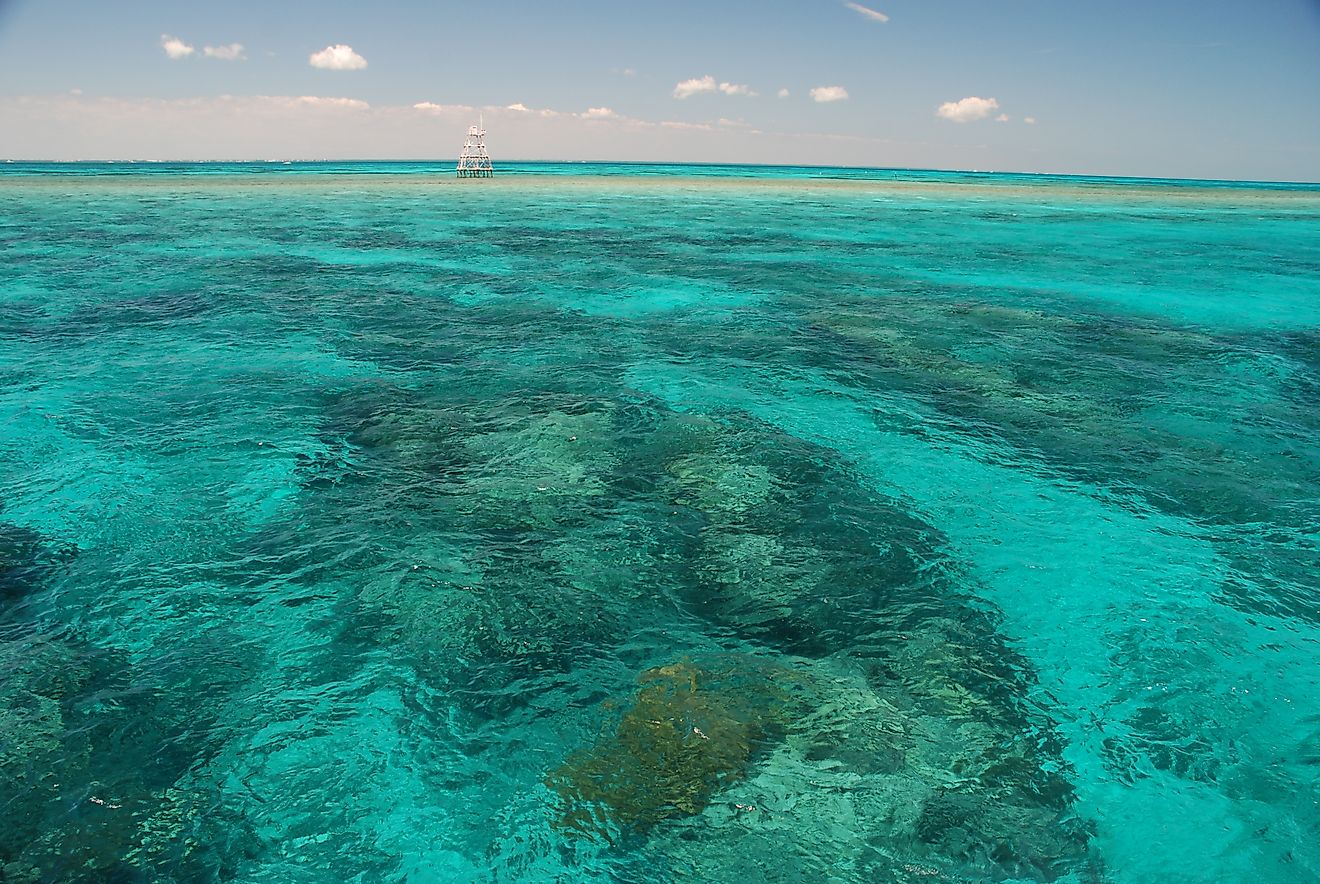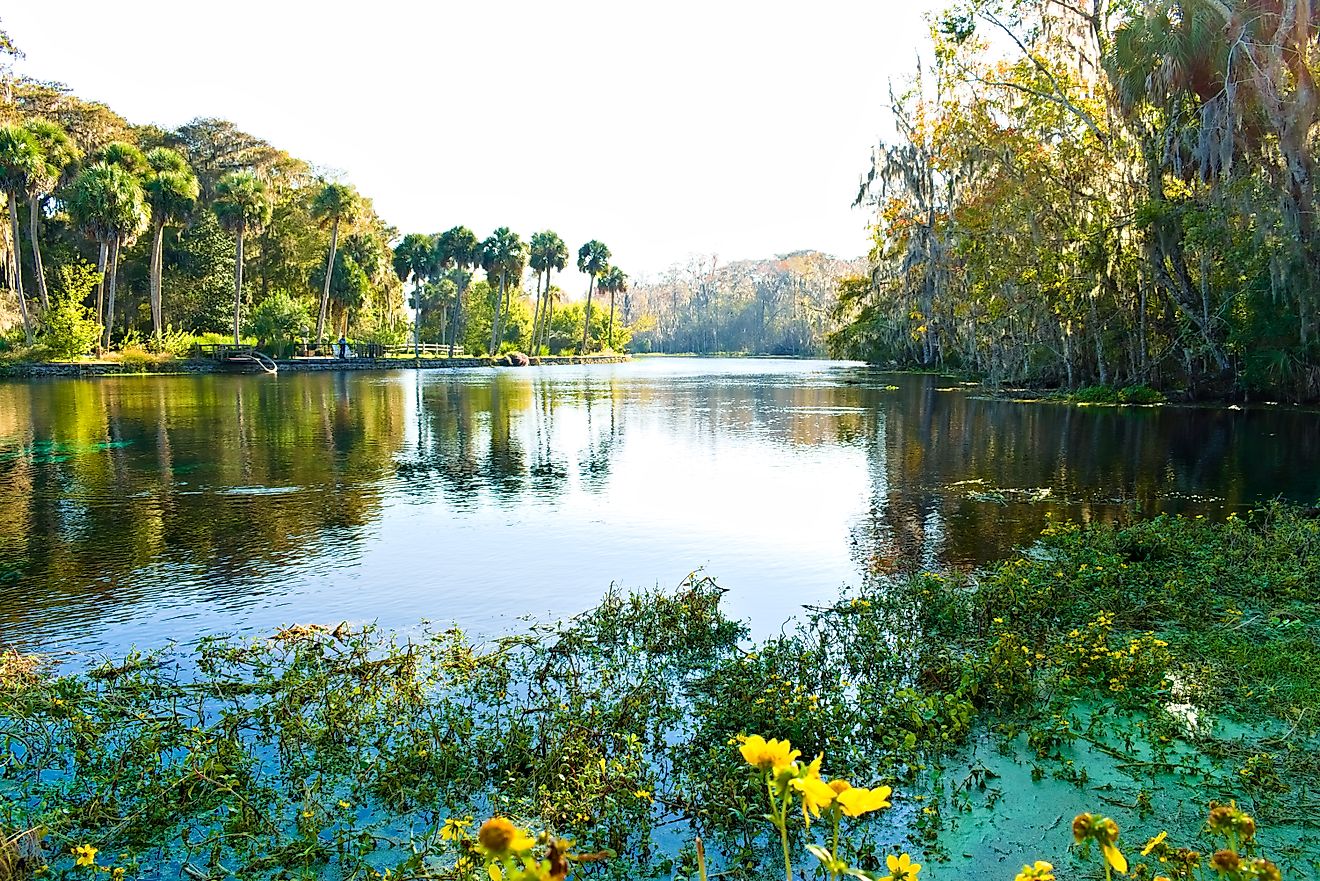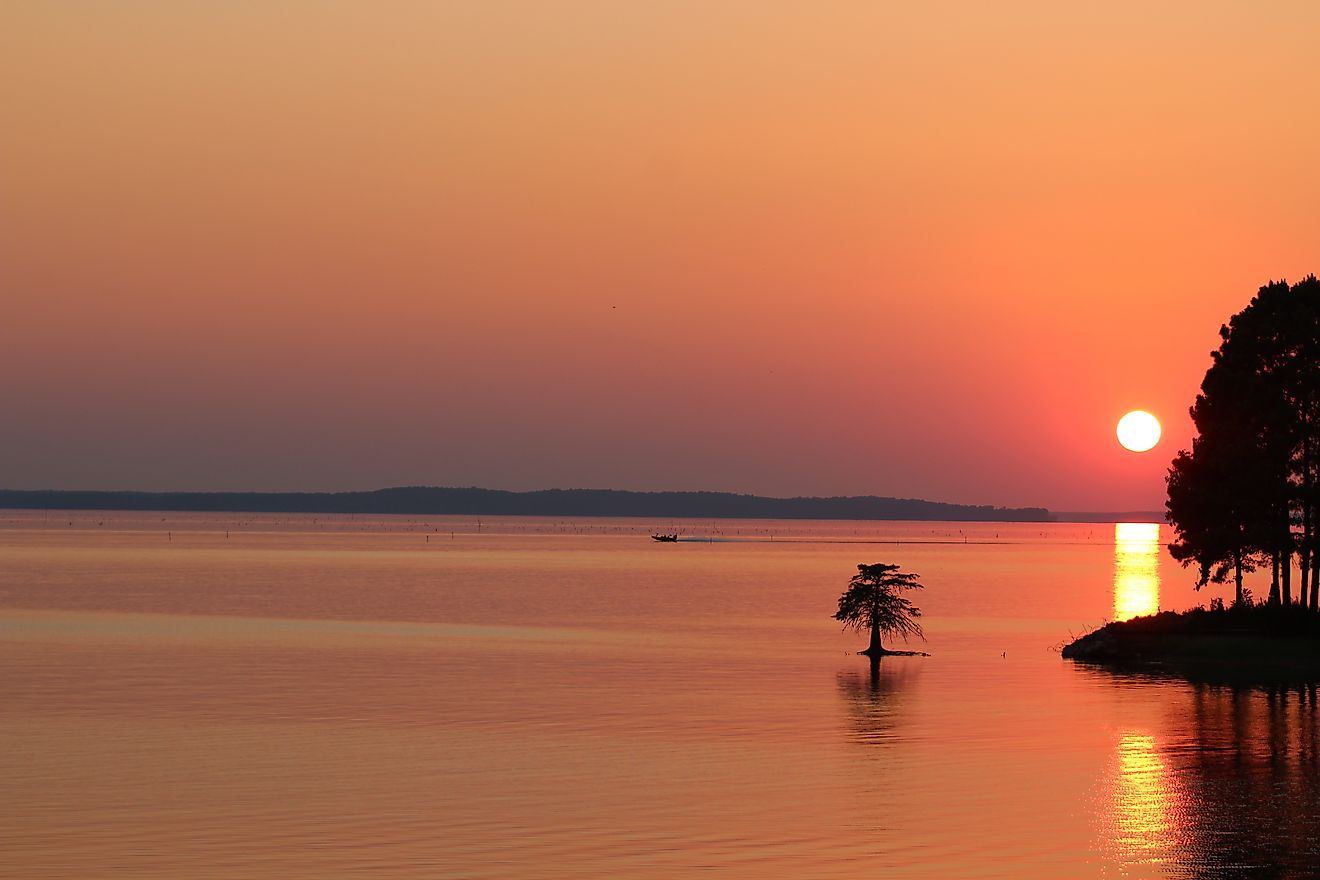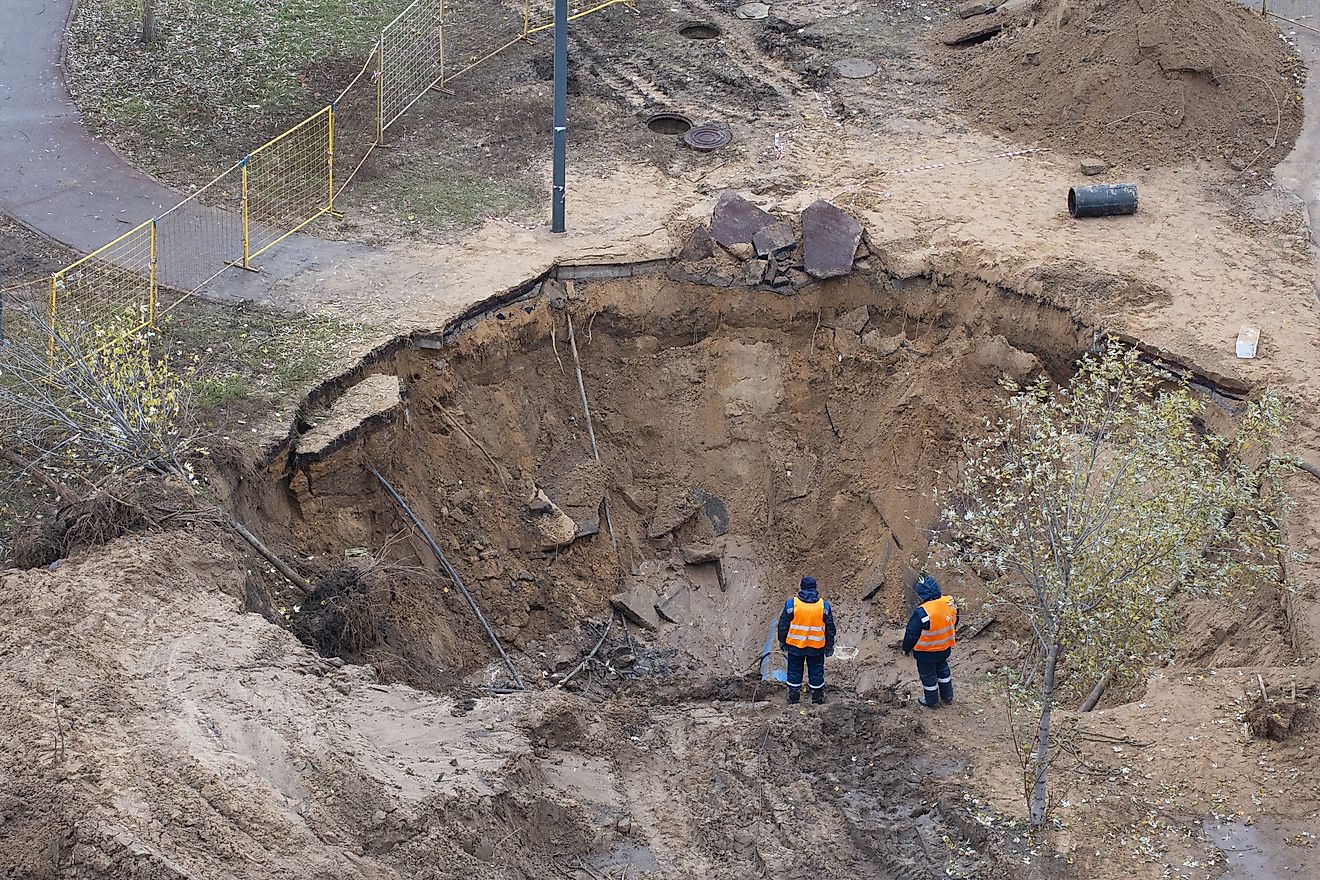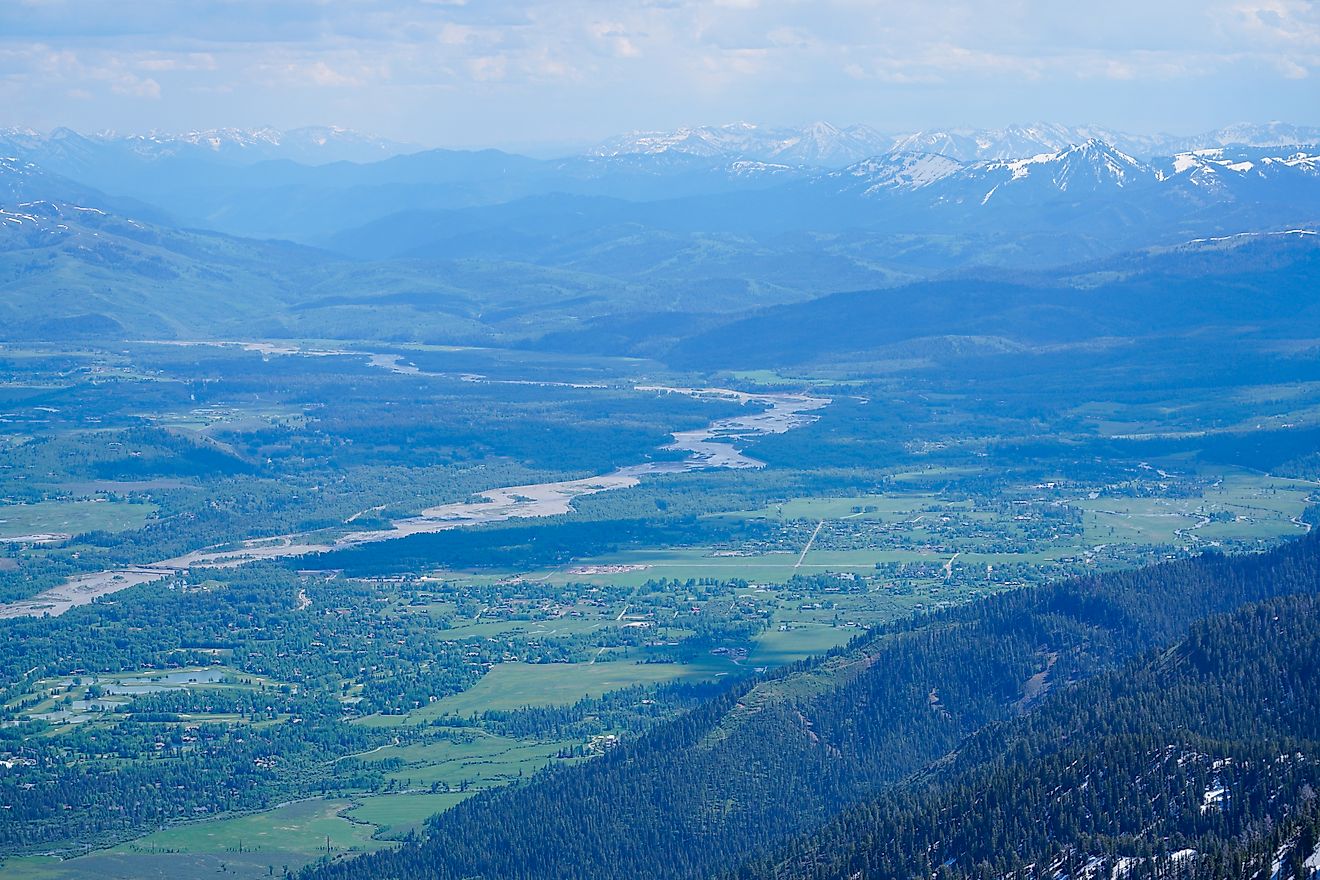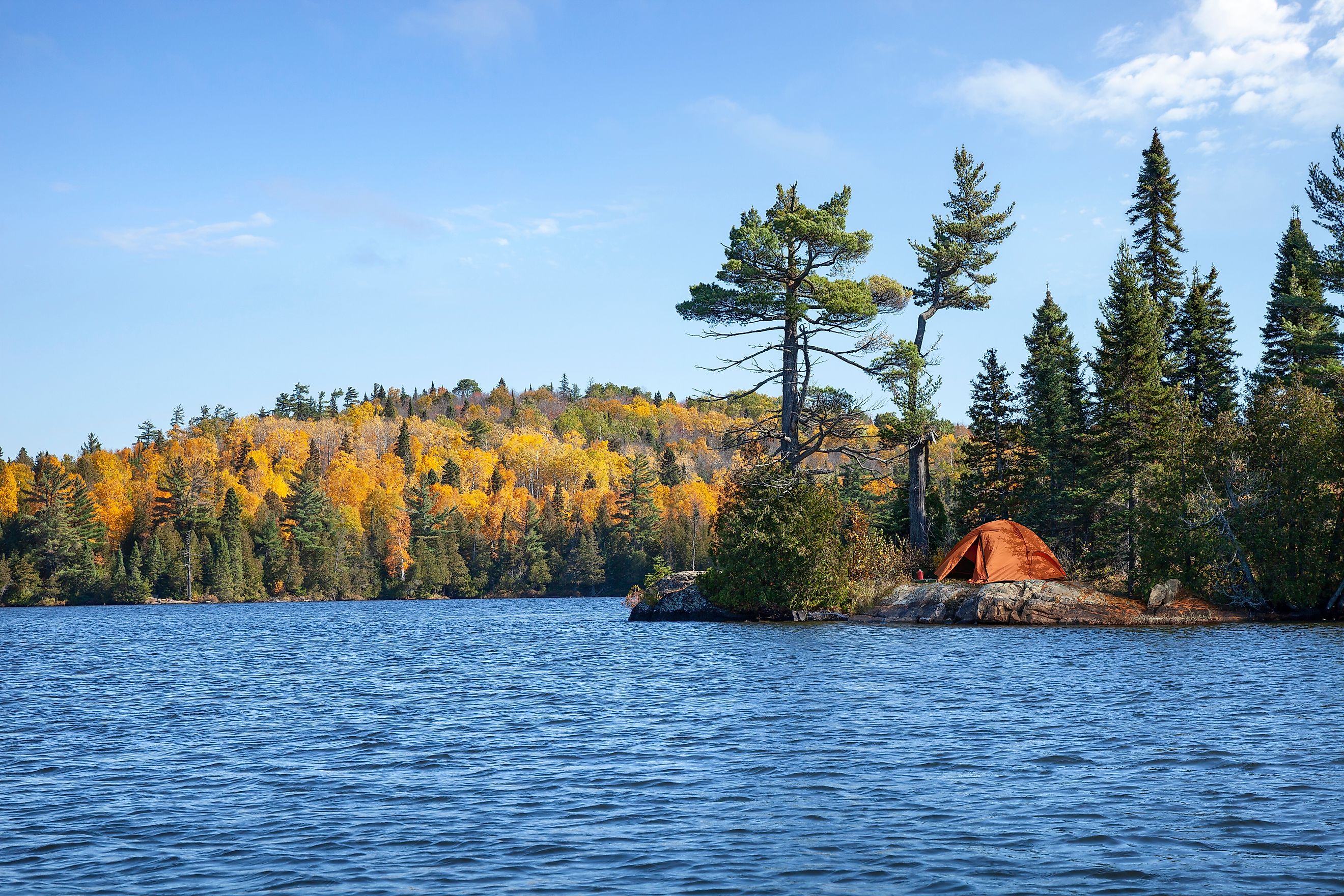
10 Largest Lakes in Minnesota
If rippling blue water, calming lake breezes, and an afternoon of fishing sounds good, then a trip to Minnesota is in order. Known as the "Land of 10,000 Lakes" Minnesota is home to many large lakes with surface areas spanning 31,700 square miles in some cases. Among these, the largest lakes, like Lake Superior, the largest freshwater lake in the US., and Mille Lacs Lake, renowned for its fishing opportunities, stand out. Whether you’re exploring the rugged shoreline of Lake of the Woods or enjoying the recreational activities on Red Lake, Minnesota’s vast and beautiful lakes promise adventure and tranquility alike.
Lake Superior

Fall foliage along the North Shore of Lake Superior in Northern Minnesota.
With a total surface area of 31,700 square miles, Lake Superior is not only the largest freshwater lake in the US, but the largest in the world. And although only 1,504 square miles of the lake’s surface are located in Minnesota, it is also the largest lake in the state. At its deepest point, Lake Superior plunges 1,333 feet downward, which puts it in the top five deepest lakes in the US.
Despite its size, Lake Superior has an “oligotrophic environment” which is a fancy way of saying that the water is clear, cold, and only able to support a simple ecosystem. Although you won’t find much algae growth here, the lake is still home to over 80 different types of fish including different varieties of trout, yellow perch, longnose sucker, walleye, and smallmouth bass. Of the lake's 2,725 miles of shoreline, about 150 miles are located in Minnesota. Along this stretch lies the town of Duluth, the North Shore Scenic Drive, and the Grand Portage National Monument.
Lake of the Woods
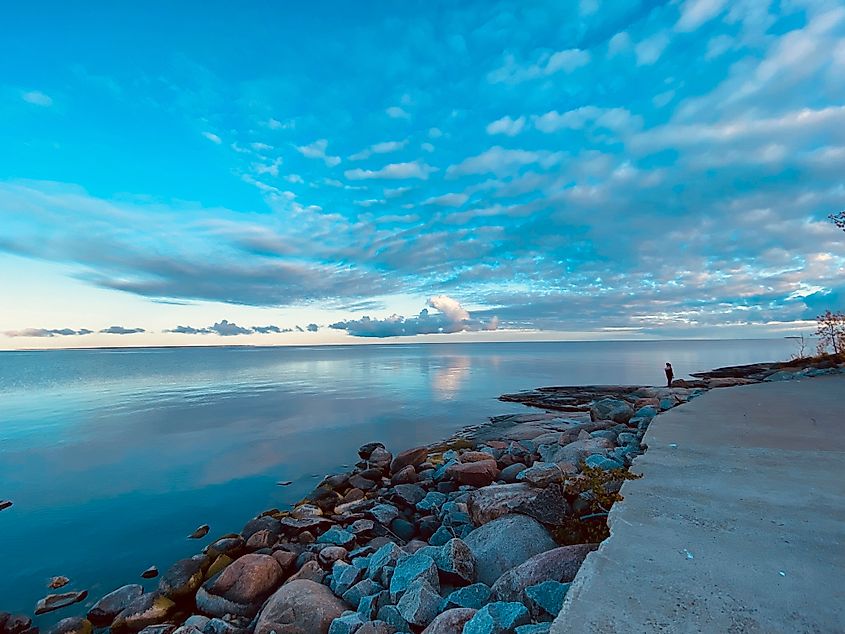
Morning sunrise on Lake of the Woods, Minnesota. Taken at Rocky Point Resort.
Lake of the Woods is another huge border lake with a total surface area of roughly 1,680 square miles. Of that, about 480 square miles lie within the boundaries of Minnesota. The lake has a maximum depth of 210 feet and features a stunning 25,000-mile-long shoreline where world-class fishing and tourism-based activities can be enjoyed. There are also over 14,000 islands located throughout the lake.
In the freshwater, trout, pike, muskies, sturgeon, and several other fish are able to thrive. However, some environmental factors do plague the lake and put these fish in danger. These factors include high levels of phosphorus and excessive blue-green algae growth that, at times, covers up to 80% of the lake’s surface. Those hoping to learn more about Lake of the Woods can pay a visit to Minnesota’s Lake of the Woods County Historical Society.
Red Lake

Fishing boat on Upper Red Lake in northern Minnesota heading in at sunset.
Although it’s third on this list, Red Lake is the largest natural freshwater lake located entirely in Minnesota. Spanning a surface area of 440 square miles, Red Lake is split into two connected sections: Upper Red Lake and Lower Red Lake. Both sections are home to several species of fish including walleye, lake trout, black crappie, burbot, northern pike, and Johnny darter just to name a few. The lake has a maximum depth of 15 feet.
Perhaps one of the most interesting things about Red Lake is its Ojibwe origin story. The story details a conflict between lumberjack Paul Bunyon and Ojibwe leader Nanabozho, which results in Nanabozho slapping Bunyon in the face with a massive walleye. As a result of this slap, Bunion loses his footing and falls on his butt. The story claims that this butt imprint is what formed Red Lake as we know it today.
Mille Lacs Lake

Spanning a surface area of 207 square miles, Mille Lacs Lake has a great reputation among anglers as a hot spot for walleye fishing. With a maximum depth of 42 feet, the lake's relatively shallow waters are also ideal for reef-top fishing. Among the reefs, you can find a range of different fish species including jumbo perch, muskie, tullibee, smallmouth bass, and northern pike.
In the southern part of Mille Lacs Lake, you will find several gravel bars and rock bars sprinkled throughout the water. Surrounding the park, exist several protected lands including the Mille Lacs Kathio State Park and the Ojibwe-based Mille Lacs Reservation.
Leech Lake
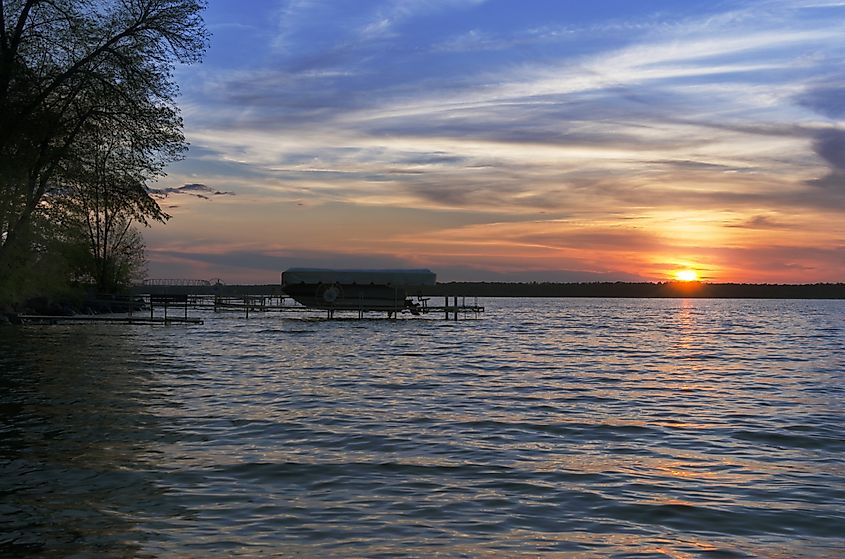
Sunset With A Single Boat Over Leech Lake, Minnesota United States.
Located within the Leech Lake Reservation, Minnesota’s Leech Lake is a beautiful body of water with a surface area of roughly 160 square miles. The lake's name comes from the Ojibwe word; Gaa-zagaskwaajimekaag. This loosely translates to “lake abundant with bloodsuckers,” referring to the population of leeches that call these waters home. At its deepest point, Leech Lake reaches 156 feet but on average, the waters run about 35 feet deep.
Throughout those waters, travelers will find a total of 11 islands. As a popular sport fishing destination, Leech Lake is home to several varieties of fish including black crappie, bowfin, bluegill, catfish, sunfish, bass, pike, and walleye just to name a few.
Lake Winnibigoshish
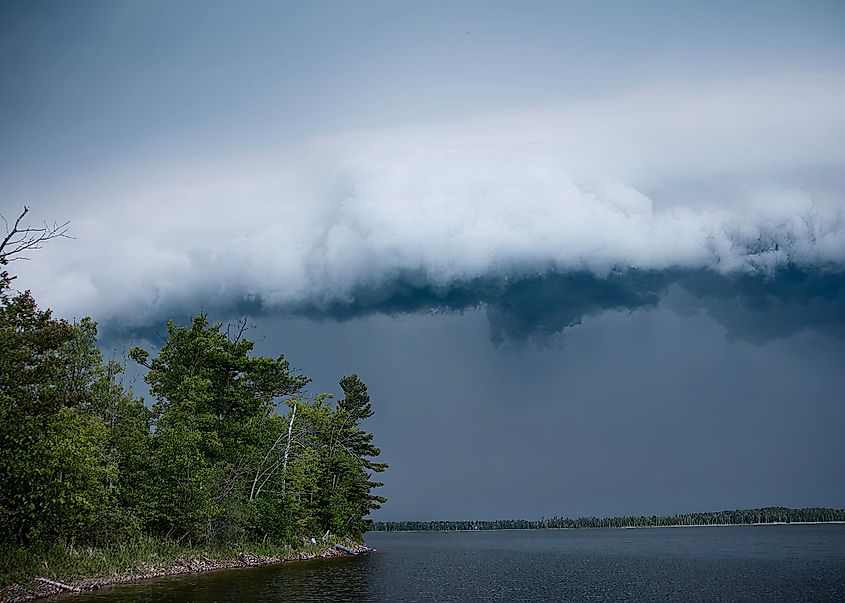
Line of storm clouds approaching on a remote lake in the Chippewa National Forest, northern Minnesota USA.
Lake Winnibigoshish sits inside the beautiful Chippewa National Forest and has a surface area of about 88 square miles and a maximum depth of nearly 80 feet. Like many lakes in Minnesota, the lake’s name has Ojibwe origins and translates roughly to “filthy water.” Despite the name, the water here is clear enough for recreational activities including swimming and various water sports. The lake is a popular destination among anglers in both summer and winter. Whether you’re fishing from a boat or an ice hut, Lake Winnibigoshish is home to many of the same species of fish as the other lakes on this list–walleye, northern pike, muskie, perch, and crappie.
Lake Vermilion
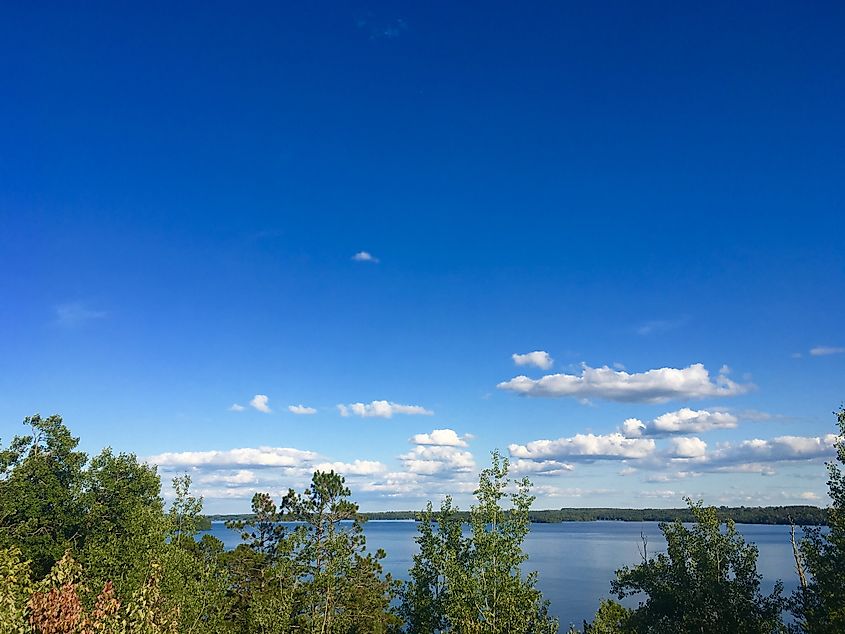
Lake Vermilion, Minnesota in late summer.
Lake Vermilion, or Onamanii-zaaga'iganiing if you’re going by its Ojibwe name, is a shallow freshwater lake with a sparkling shoreline spanning 313 miles. The lake has a surface area of 61 square miles and reaches 76 feet at its deepest point. Widely considered one of Minnesota’s most scenic lakes, travelers will find vibrant sunsets and hundreds of islands around the water.
In the winter, activities including ice fishing and snowmobiling are available. As far as the types of fish you will find here, there are several. These species include black crappie, bluegill, brown bullhead, largemouth bass, muskie, northern pike, sunfish, rock bass, smallmouth bass, tullibee, walleye, white sucker, and yellow perch.
Lake Kabetogama

Lake Kabetogama, Evening, Voyageurs National Park, Minnesota, USA.
Inside the beautiful Voyageurs National Park travelers will find Lake Kabetogama. The popular body of water features a surface area of 40 square miles and a maximum depth of 80 feet. The lake’s Ojibwe name is Gaa-biitoogamaag-zaaga'igan. This translates loosely to “the lake that lies parallel or double with another lake.” And what a fitting name, as Lake Kabetogama does lie parallel to the nearby Rainy Lake. Surrounding the water are several camping sites that are only accessible by boat. In addition to camping, the lake provides a handful of recreational opportunities such as fishing, swimming, and snowmobiling in the winter.
Lake Pepin

Lake Pepin boasts a surface area of roughly 40 square miles and reaches 60 feet at its deepest point. On average though, the water runs about 20 feet deep and is home to a variety of fish including walleye, saugers, yellow perch, various types of bass, carp, freshwater drum, catfish, minnow, and several others. The freshwater lake is connected to the popular Mississippi River and spans across the Minnesota border into Wisconsin. One of the most notable things about Lake Pepin is its title as the “birthplace of waterskiing.” In 1922, a teenage local named Ralph Samuelson took his homemade skis and hitched himself to a boat on Lake Pepin, and thus, water skiing was invented.
Cass Lake
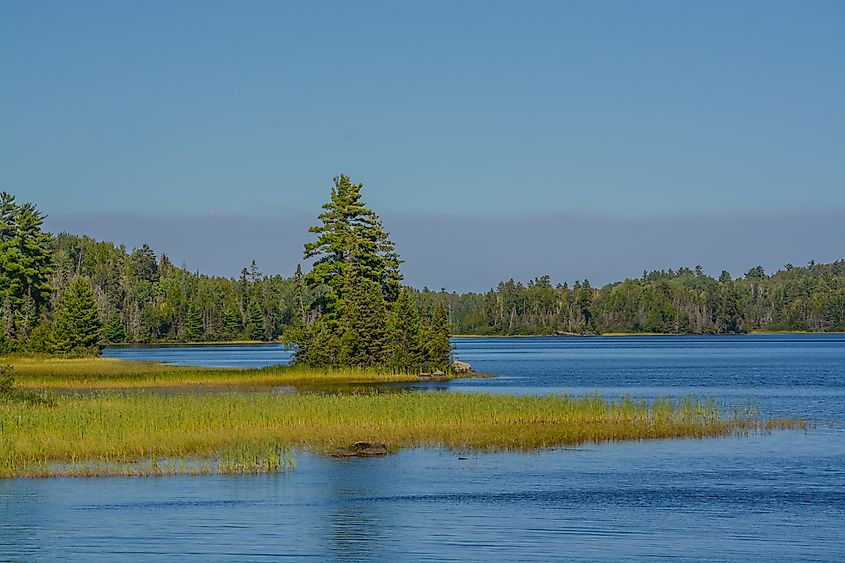
Beautiful view of Pike Bay on Vermillion Lake in Tower, Cass County, Minnesota.
Yet another lake in Chippewa National Forest, Cass Lake boasts a surface area of approximately 25 square miles. At one time, however, the lake was considered to be much larger as it was connected to the nearby Pike Bay. Today, the two bodies of water have separated leaving Cass Lake with a maximum depth of 120 feet. Historically the lake was an established fur trading post but today, the lake is mainly used for recreational purposes including fishing, boating, and swimming. Those interested in fishing here will find Black Bullhead, Black Crappie, Bullhead, Burbot, Largemouth Bass, Muskie, Northern Pike, and many others.
In Conclusion
From the largest freshwater lake in the world to the birthplace of water skiing, the Land of 10,000 Lakes doesn’t disappoint. Minnesota’s largest lakes offer everything from recreational fun to interesting origin stories, fishing opportunities and so much more. Each lake has its own unique charm, providing ample opportunities for adventure, relaxation, and connection with nature. Whether you're planning a family getaway or a solo retreat, Minnesota’s stunning lakes are calling. So don’t wait any longer—dive into a memorable Minnesota lake trip today!
